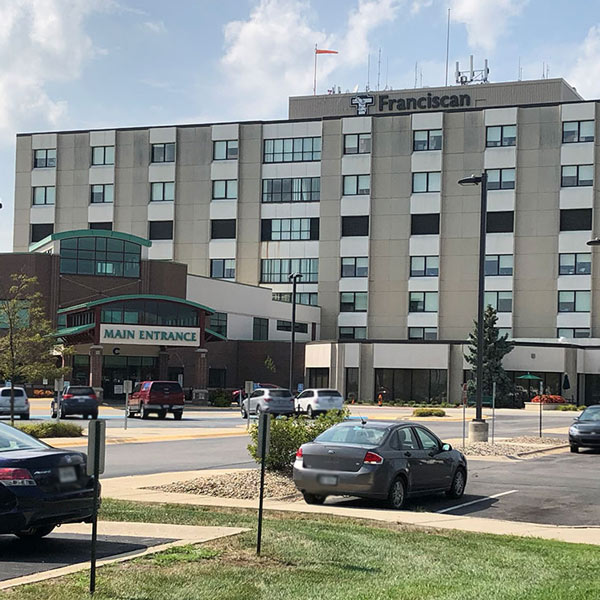About This Screening
During a PET / CT Scan, the patient lies still on a table that is attached to a scanner, camera and computer. A tracer, or a sugar-like radioactive substance, is injected into the vein and will collect in cancerous cells.
The scanner takes a series of pictures that are then sent to the computer screen. The camera detects the location of the tracer, allowing the physician to identify cancerous areas and determine the stage of the cancer.
The scanning process is painless and takes approximately one to three hours to complete. During the test, the patient may communicate with the technologist through a two-way intercom. Following the PET / CT scan, patients should drink plenty of fluids in order to flush the low-dose radioactive material from the body.
Preparing for a PET / CT scan
Twenty hours before the PET/CT scan, patients should avoid:
- Smoking
- Consuming caffeine or alcohol
- Taking any medicines, including over-the-counter and herbal remedies
Patients should also avoid eating or drinking eight hours prior to the test.
Side effects of a PET / CT scan
As with all tests that use radioactive materials, there is a slight chance that cells or tissues may be damaged by the low levels of radiation injected into the body. However, the benefits of PET/CT far outweigh the risks. Rarely do patients experience soreness or swelling at the tracer injection site. Allergic reactions to the tracer are also very rare.
PET / CT scans help in the fight against cancer
PET/CT (Positron emission tomography - computed tomography) is a specialized way to create 3D color images of body functions, including growths. While other types of tomography - including CT and MRI - look at body form, PET/CT scans provide helpful clues about your body chemistry and function.
For some types of cancers, PET/CT scans can detect early-stage growths more clearly than CT or MRI. PET/CT images are not as detailed as those generated by CT or MRI; therefore, the doctor may match PET/CT images with additional CT scans to assess the cancer's location and stage of development.
PET/CT scans also are used to help determine the extent of cancerous activity - for example, whether the cancer is present in multiple locations in the body. A doctor may order a PET/CT scan to determine the best course of treatment.




